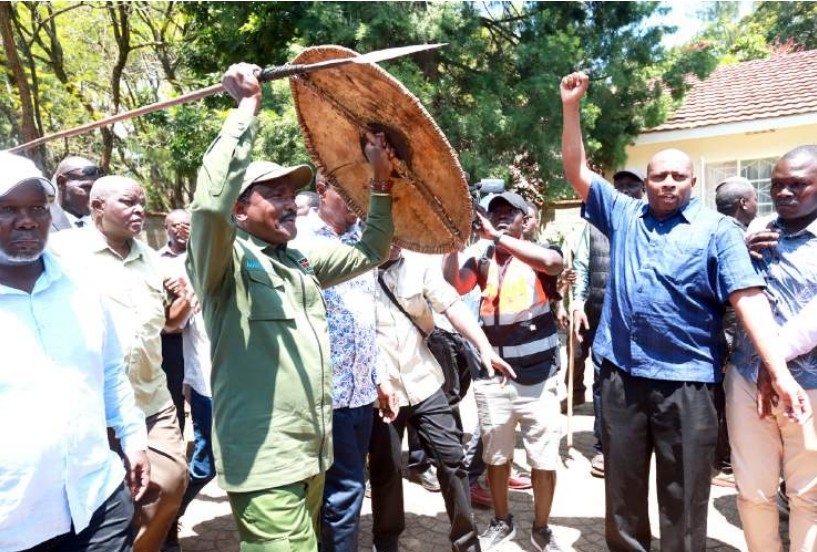The World Health Organization has called for a change in dealing with neglected tropical diseases.
WHO has lauded Kenya for her approach in eliminating Neglected Tropical Diseases.
Kenya is among few countries that have employed the One Health approach which recognises, people’s health is closely connected to the health of animals and the shared environment.
This means there is a need to appreciate that close contact with animals and their environments provide more opportunities for diseases to pass between animals and people.
The NTDs are a group of diseases that afflict the poor hence have not received as much attention as other diseases despite having a devastating impact on those affected.
They include trachoma, snakebites, dengue, chikungunya, sleeping sickness, bilharzia, elephantiasis, Kala-azar and leprosy.
This diverse group of tropical infections are common in low-income populations in developing regions of Africa.
They are caused by a variety of pathogens such as viruses, bacteria, protozoa and parasitic worms.
They are neglected because, compared with malaria, HIV and TB, they have received less funding or attention from national governments, medical and donor communities despite the vast numbers of people affected.
Kenya’s One Health Zoonotic Disease Unit is jointly headed by the director general of health and the director of veterinary services.
The global health agency has said the approach will help identify common grounds to maximise efforts to control and eliminate the diseases.
NTDs are mainly prevalent in tropical areas, where they mostly affect impoverished communities, affect women and children and cause devastating health, social and economic consequences to more than one billion people.
“This supports a collaborative approach whereby One Health unit delivers joint surveillance and outbreak investigation, data and information-sharing among health, veterinary and environmental services and the community to address zoonoses,” WHO said in their document released on Sunday.
“The work of the unit has resulted in improved data on zoonotic diseases and improved outbreak responses, it has provided a successful model for other countries to emulate.”
Kenya like the rest of the world has been struggling to eliminate this group of diseases that has devastating effects on those affected.
Data from the ministry shows 50 per cent of the population is at risk of suffering NTDs representing 25 million people in Kenya.
In Kenya, trachoma is one of the leading causes of blindness. Bilharzia is ravaging people in the Lake region and central parts.
The disease is said to have rendered several young women infertile.
These diseases have bad effects and several people affected by these diseases such as elephantiasis at the Coast have been stigmatised.
This has affected their ability to coexist with other people.
Children are being badly affected by intestinal worms which are very prevalent in the county and many others such as leprosy and Kalaazar which has had outbreaks in Marsabit and Garissa.
“Building One Health into NTD programmes will ensure the contribution of partners from various sectors in increasing the health gains of people, animals and the environment,” Dr Bernadette Abela-Ridder said.
Abela-Ridder is a Scientist at the WHO Department of Control of Neglected Tropical Diseases.
Despite Kenya receiving the status as having eradicated the highly feared leprosy in 1989, statistics show cases have recently risen from 93 in 2017, 110 in 2018 and 154 in 2019, creating fear that it could creep back.
Kenyans in some parts of the country continue to succumb to snakebites.
Late last year, experts expressed concern over the steady rise in the number of reported cases of leishmaniasis, also known as Kala-azar, in the country.
The Health Ministry launched the first strategic plan for control of leishmaniasis 2021-2025 that aims to guide the control and management of the disease and work towards elimination as a public health concern.
“The strategy will guide the control and management of leishmaniasis with a focus on disease ecology and mapping, case identification and management, health systems strengthening, surveillance and vector control,” Health CAS Rashid Aman said during the launch.
According to WHO, more than 90 per cent of new cases of kala-azar reported in 2019 occurred in 10 countries; Nepal, Iraq, Brazil, Eritrea, Ethiopia, India, Kenya, Somalia, South Sudan and Sudan.
Edited by Kiilu Damaris














![[PHOTOS] How ODM@20 dinner went down](/_next/image?url=https%3A%2F%2Fcdn.radioafrica.digital%2Fimage%2F2025%2F11%2F99d04439-7d94-4ec5-8e18-899441a55b21.jpg&w=3840&q=100)

